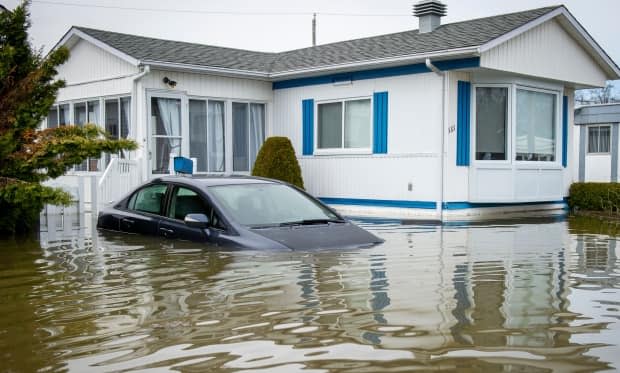Quebec won't permit reconstruction of worst-hit homes in flood zones
The Quebec government has imposed a freeze on repairs to homes that were badly damaged in this spring's floods, with the exception of houses inundated by the Lake of Two Mountains in Sainte-Marthe-sur-le-Lac.
The decree, announced Monday by Municipal Affairs and Housing Minister Andrée Laforest, applies to homes that sustained more than 50 per cent damage, which flooded in 2017 or 2019, as well as any homes in a zero-to-20 year — or high-risk — flood zone.
The freeze went into effect at 2 p.m. Monday and will remain in effect until new rules on building in flood zones are adopted between now and the end of the year.
Laforest said the measure was put in place immediately in order to avoid a "race for permits" by homeowners still hoping to undertake extensive repairs.

Ste-Marthe 'exceptional'
More than 5,000 residents in Sainte-Marthe-sur-le-Lac were evacuated last April 27, when a 50-metre section of the dike holding back the Lake of Two Mountains was breached.
Because the flooding in Sainte-Marthe was related to the dike breach, residents in that area will be allowed to rebuild homes even if they sustained more than 50 per cent damage.
"The case of Sainte-Marthe-sur-le-Lac is an exceptional one," said Laforest, defending herself against a suggestion that community is getting special treatment. "If the dike hadn't been breached, we wouldn't be there."
The government has already committed to rebuilding and reinforcing that dike, which was constructed in 1980. However, it now says no new construction will be approved for the Sainte-Marthe flood plain, on properties vacant as of June 10.
As announced last April, victims of recurring floods are entitled to compensation of 50 per cent of a home's value, to a maximum of $100,000. Once damage exceeds that amount, homeowners will no longer be compensated for flood damage to their property, but they can receive up to $200,000 to relocate to an area outside the flood zone.

